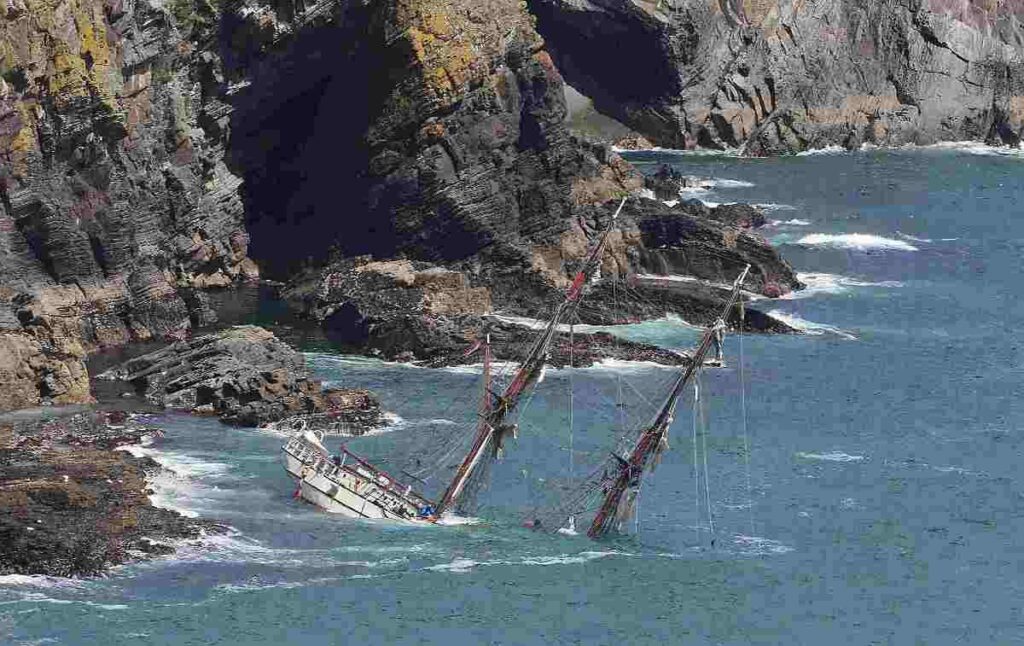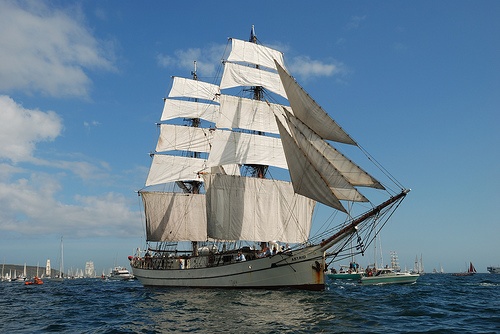The TS Astrid was a remarkable tall ship that embodied the spirit of adventure, education, and resilience. Built in 1918 in Scheveningen, Netherlands, the vessel underwent numerous transformations throughout her life, serving various purposes and owners before meeting a tragic end in 2013. This blog post delves into the history, design, operational career, and eventual demise of the TS Astrid, highlighting her significance in maritime history.
Origins and Early Years
The TS Astrid was originally constructed as a lugger named W.U.T.A., an acronym for “Wacht Uw Tijd Af,” meaning “Bide Your Time.” She was built by G. van Leeuwen in Scheveningen, Netherlands, and was initially rigged as a lugger. In the early 1930s, she was re-rigged as an auxiliary schooner. By 1937, the vessel was sold to Swedish owner J. Jeppson and renamed Astrid. Operating under Swedish ownership, she sailed trade routes in the North Sea and Baltic Sea until 1975.
Ownership Changes and Alleged Smuggling Activities
In 1975, the Astrid was sold to Lebanese owners and allegedly used for illicit activities, including drug smuggling. The vessel was found burnt out on the coast of England in the early 1980s. Subsequently, she was overhauled and repurposed as a sail training vessel. From 1984 to 1997, the TS Astrid was based in Weymouth, Dorset, United Kingdom, and was informally known as “Weymouth’s vessel.”
Design and Specifications
The TS Astrid was a dual-masted, square-rigged, iron/steel-hulled tall ship. The ship measured 41.90 meters (137 feet 6 inches) in length, with a beam of 6.48 meters (21 feet 3 inches) and a draught of 2.65 meters (8 feet 8 inches). The mast height reached 25 meters (82 feet). In addition to her sails, the vessel was equipped with a 253-kilowatt (339 hp) Scania Ds 1402 four-stroke diesel engine for propulsion. The ship underwent several rigging changes throughout her life, transitioning from a lugger to a schooner and finally to a brig.
Role in Sail Training
Throughout her operational career, the TS Astrid served as a sail training vessel, providing opportunities for young trainees to learn the art of sailing and seamanship. The ship participated in various tall ship races and events, fostering international camaraderie among maritime enthusiasts. Her presence in Weymouth contributed to the local maritime culture and inspired many to pursue careers in the maritime industry.
Final Voyage and Tragic End
In 2013, the TS Astrid met her unfortunate end when she ran aground near the coast of Ireland. All crew members and trainees were safely rescued by lifeboats from the Kinsale and Courtmacsherry lifeboat stations. The incident marked the end of the vessel’s storied career as a sail training ship.

Legacy
The legacy of the TS Astrid lives on through various commemorations and the memories of those who sailed aboard her. The Friends of Astrid group continues to honor the ship’s contribution to maritime training and her role in fostering international maritime relations.
Model Representation
For enthusiasts and modelers, the TS Astrid has been immortalized through detailed model plans. The MM1502 plan by Richard Webb offers a 1:32 scale representation of the ship, capturing her intricate design and rigging. This model serves as a tribute to the vessel’s maritime heritage and provides a means for future generations to appreciate her historical significance.
Conclusion
The TS Astrid was more than just a ship; she was a symbol of maritime tradition, education, and international cooperation. From her construction in 1918 to her final voyage in 2013, the vessel’s journey reflects the dynamic nature of maritime history. While the ship herself is no longer afloat, her spirit endures through the stories of those who sailed on her and the continued efforts to preserve her memory.
For more information and to view photographs of the TS Astrid, you can visit the Wikipedia page or the Friends of Astrid Facebook group

